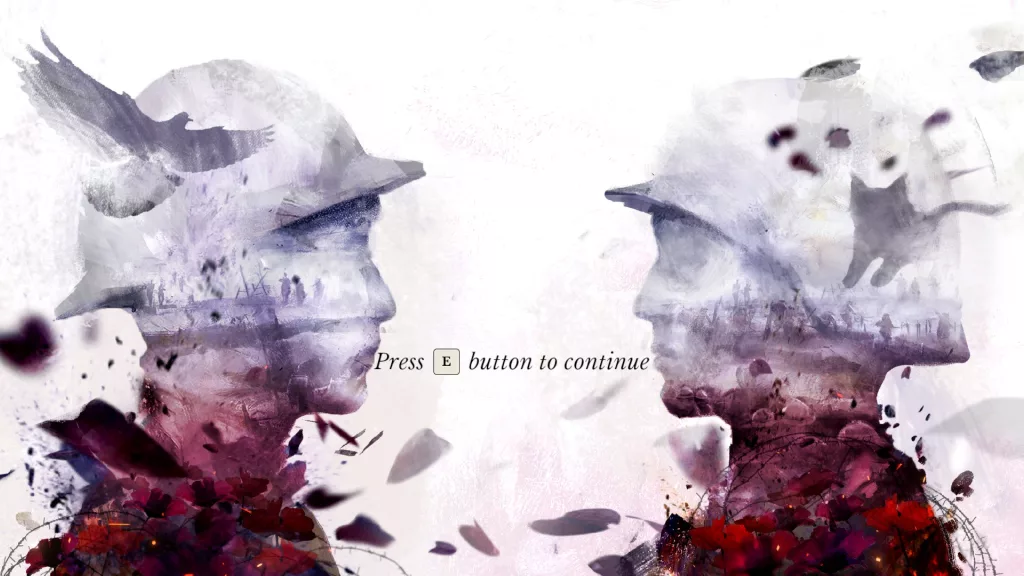11th November 1916, a young photographer leaves Canada to join the western front in Europe. The same day, a German technician is told that his son is missing in action. Both want to preserve their humanity and come back alive to their loved ones.
Playing My Steam Library
Any PC gamer that uses Steam (i.e. all of them) has the same problem. They have a lot of games. Too many games. Most of which remain unplayed. At the time of writing, I have 429 games in my Steam library. I don’t think I’ve played more than 50 of them.
I’ve decided to change that. I’m going to start playing through every single game in my library. I will do my best to complete them all, one by one. For now, I’ll start at the top. The game is 11-11 Memories Retold.
I have played this game before, but I have never completed it. So I’m going to play through the whole game and find out how the story ends. Then I may look at uncovering more of the secrets in the game and unlocking any achievements I may have missed.
Warning: Spoilers from this point.
Part One
From the title screen you can tell this is a cross-platform game. The “press button to start” is a console-oriented design pattern.
Having said this I remember the game doesn’t feel like a port. The controls were smooth on the PC and you can tell the game has been created with PC gamers in mind.
After going through the title screen and selecting New Game, I am warned that my current save data will be deleted if I do this. The game tells me how I can play older chapters if I want to keep my progress.
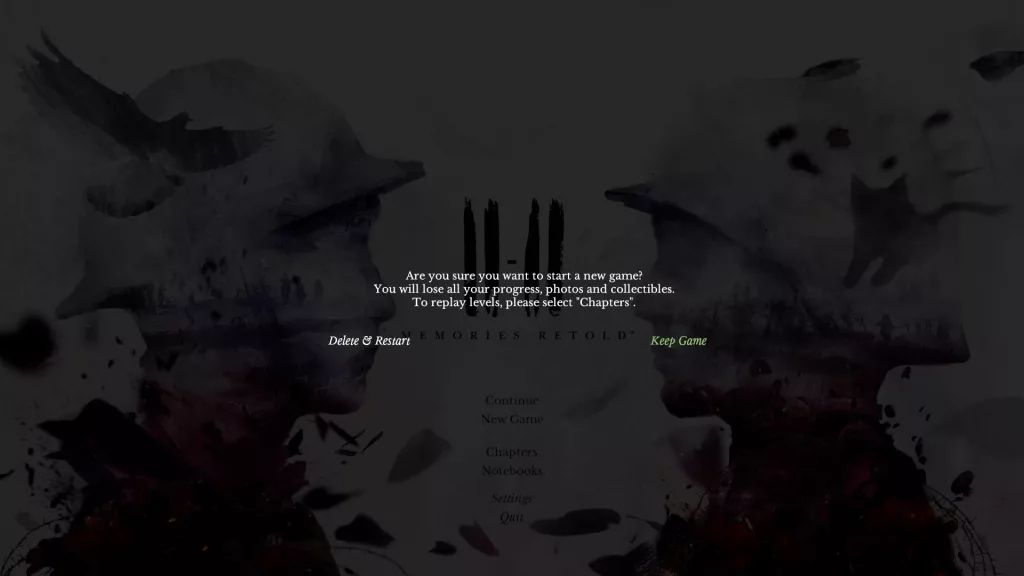
I want to do a full playthrough from the beginning, so I go through with deleting my save. But it’s nice the the warning exists.
The game opens with a cutscene focused around two characters. One flying in a hot air balloon, the other trudging through the snow. It’s clear from the context that this is a flash-forward – a hint of where the story will end up.
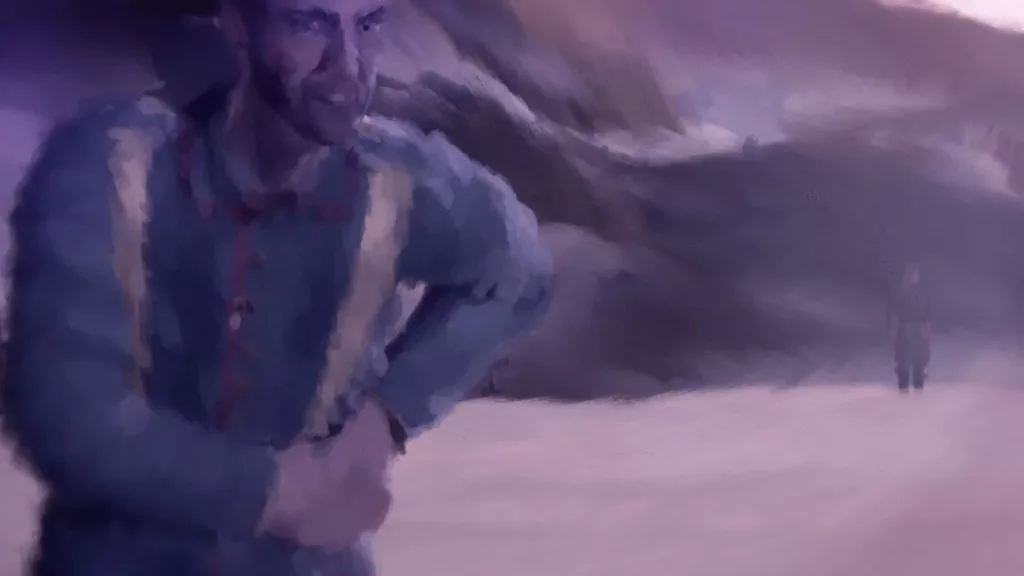
The first thing you will notice in this game is the art style. Aardman Animations of Wallace and Gromit fame were brought on board to design the look of this game. They went for a look that makes every frame an oil painting.
In many ways this is a lot harder than doing traditional game rendering. You need to develop custom shaders for the look you want, rather than off-the-shelf software. You also need to ensure that players will still be able to read the images as they could in any other game. From a technical standpoint it’s an amazing feat, and it’s a breath of fresh air seeing a game that tries something new.
Some may not like the look of the game, but I think it helps draw you in. Oil paintings invoke the past, and this game is pulling us back to the First World War. The way it feels blurry yet you can still understand the images gives a sense we are watching memories, which invokes the title – the Memories Retold. Memories can be vivid, but are often a little fuzzy.
The game fades to black.
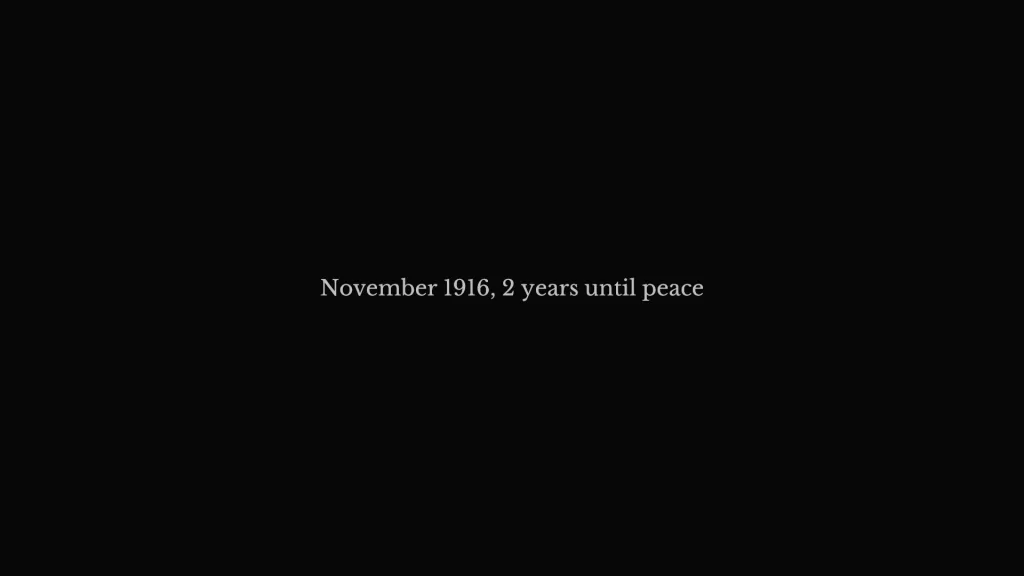
We are brought to Toronto, where we hear a brief conversation between Harry, one of the main protagonists, and Julia. A voiceover tells us that they are friends, but makes it obvious Harry has stronger feelings for her.
Our first interaction is to take a picture of Julia, which introduces us to our first game mechanic: the camera. We can frame our shot however we like, and have two zoom lenses available. Important objects are highlighted when they are in frame, so we know we are taking a picture of something important.
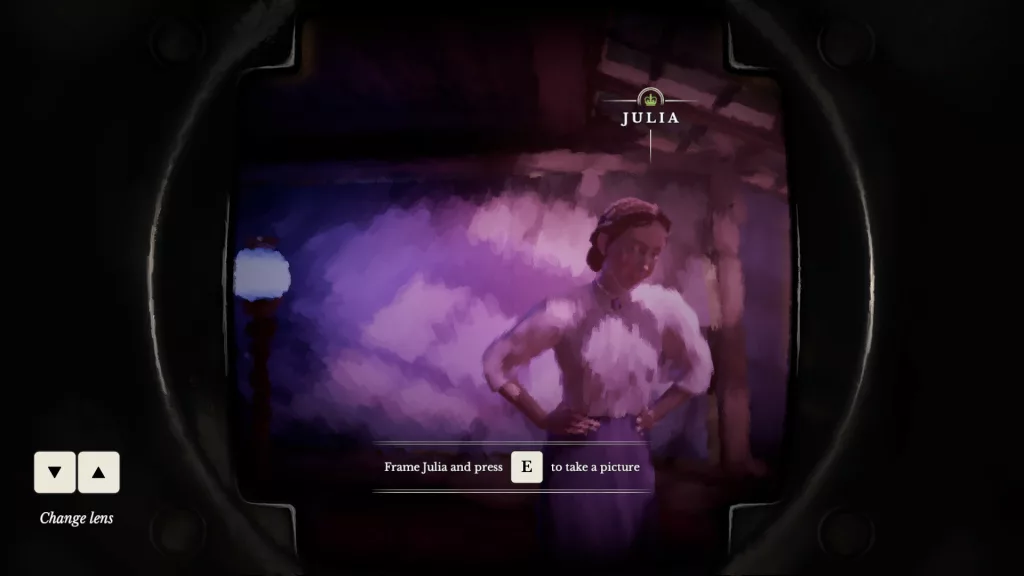
When you take a shot, a new picture is created. A virtual photograph of a videogame that looks like an oil painting.
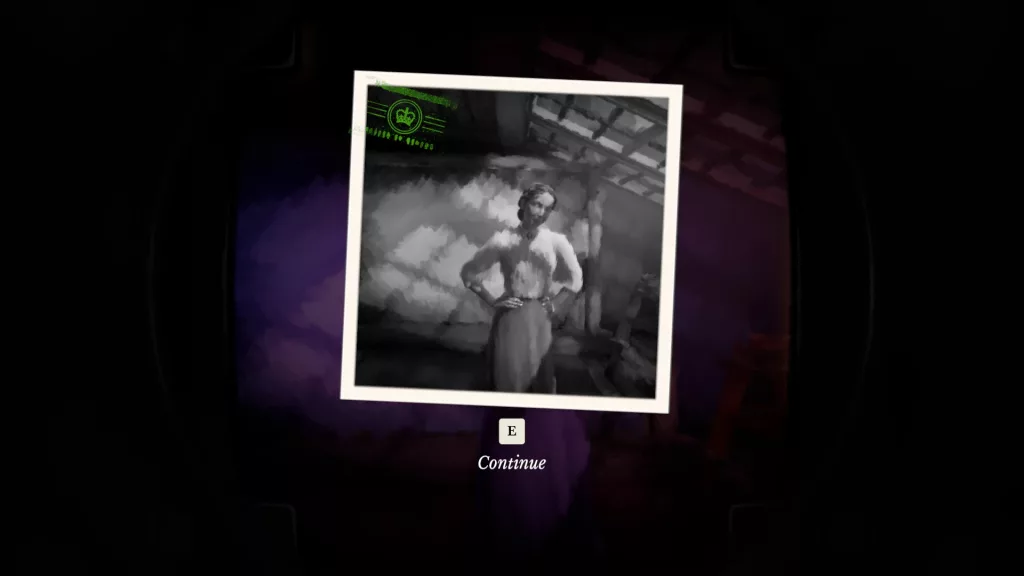
Julia is playful as we take a few more pictures of her, then the game explains we have a daily limit of pictures.
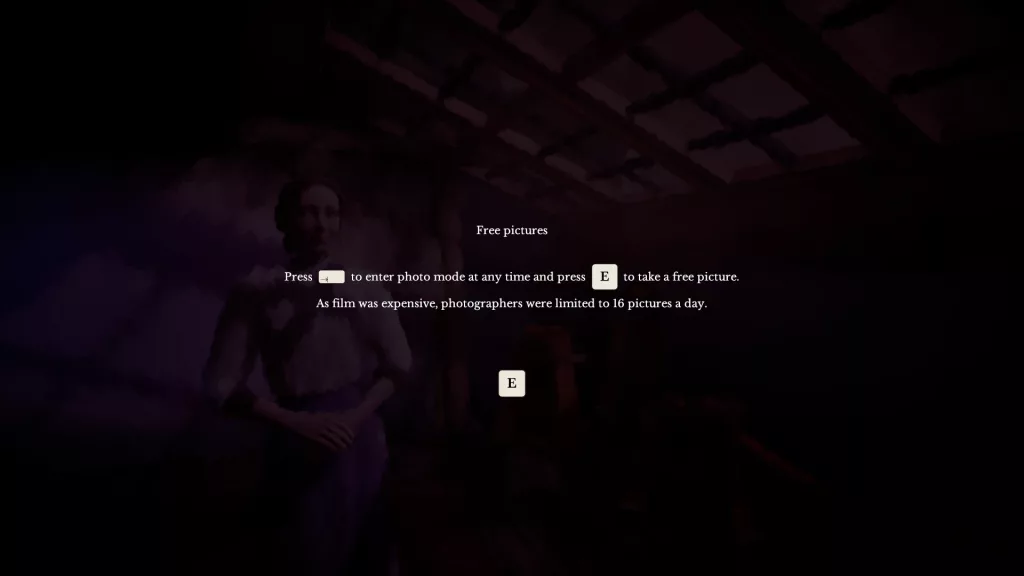
This not only reveals another mechanic, it also hints at a secondary goal of the game. As film was expensive, photographers were limited to 16 pictures a day. This is telling us something about the setting, about the year 1916. There is an educational aspect to this game, one which will be expanded upon as we progress.
We now have complete freedom to move around. The game uses typical WASD controls, although the movement is slower and more natural than you’d get from a more action-oriented game. This is a game about slow exploration, not about scoring multi-kills or jumping across platforms. As you start to move around, you can hear a conversation in the next room. An army Major called Barret has come into the store and is looking for a photographer.
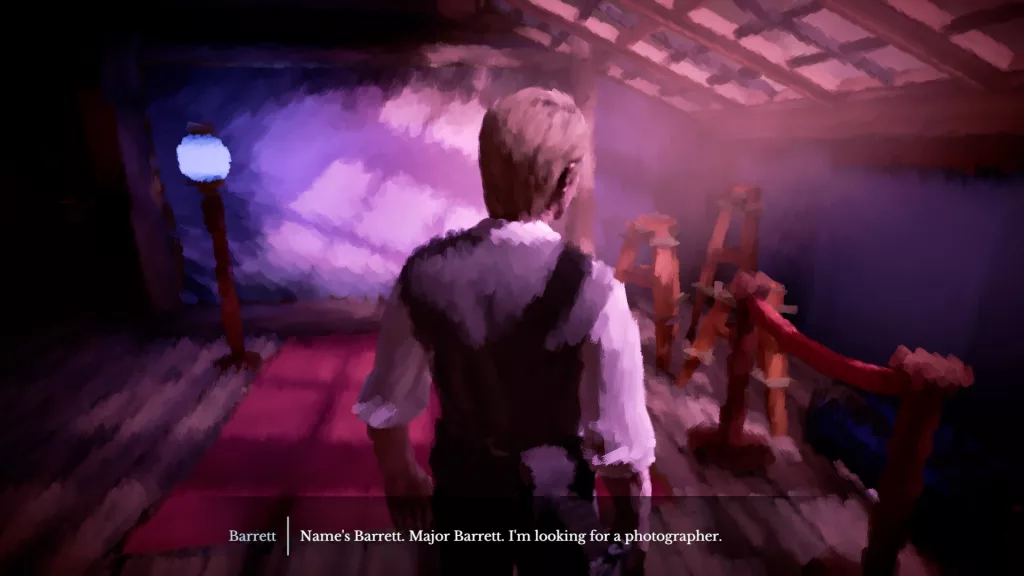
You could just walk straight into the conversation, but these back rooms are begging for a bit of exploration. If you do this, you will find some spinning notes that break the game’s immersion.
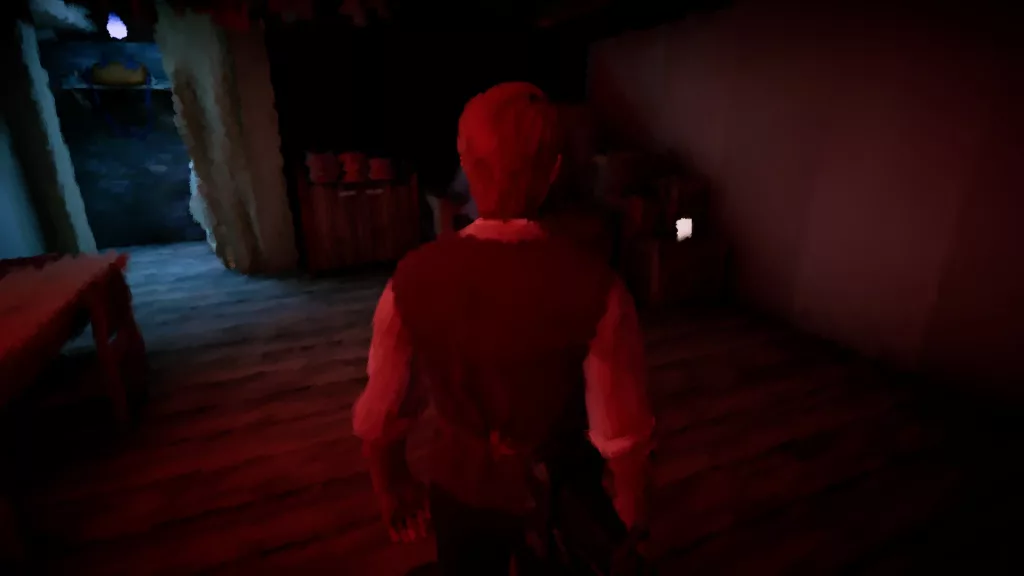
We know that pressing E performs at least one action, so we walk up to and do the same. This introduces another part of the game to us: collectibles.
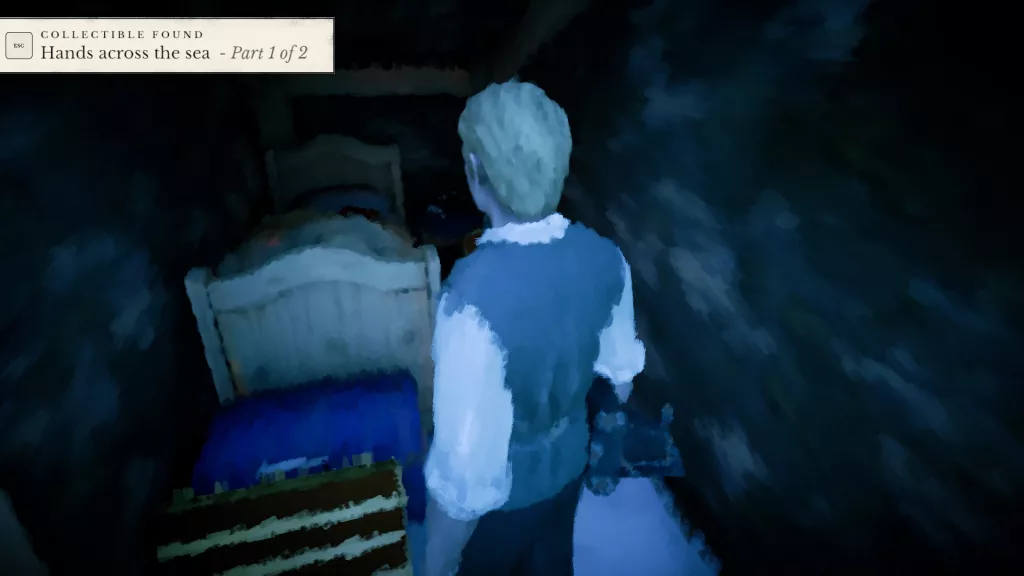
These collectibles can be accessed via the in-game menu. Each picture has two parts.
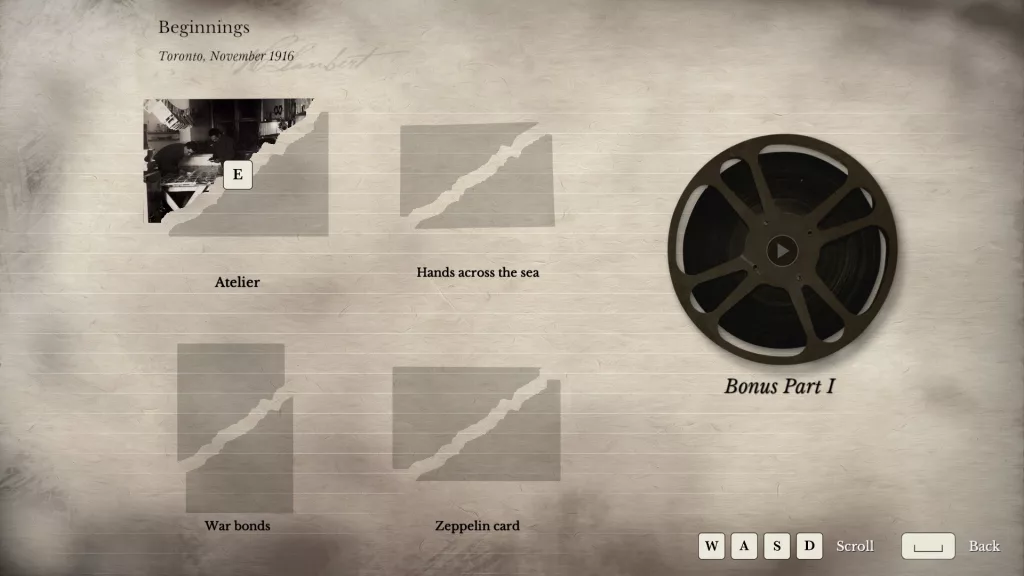
Collecting both of the parts allows us to see some bonus content in the form some historical information about the First World War period.
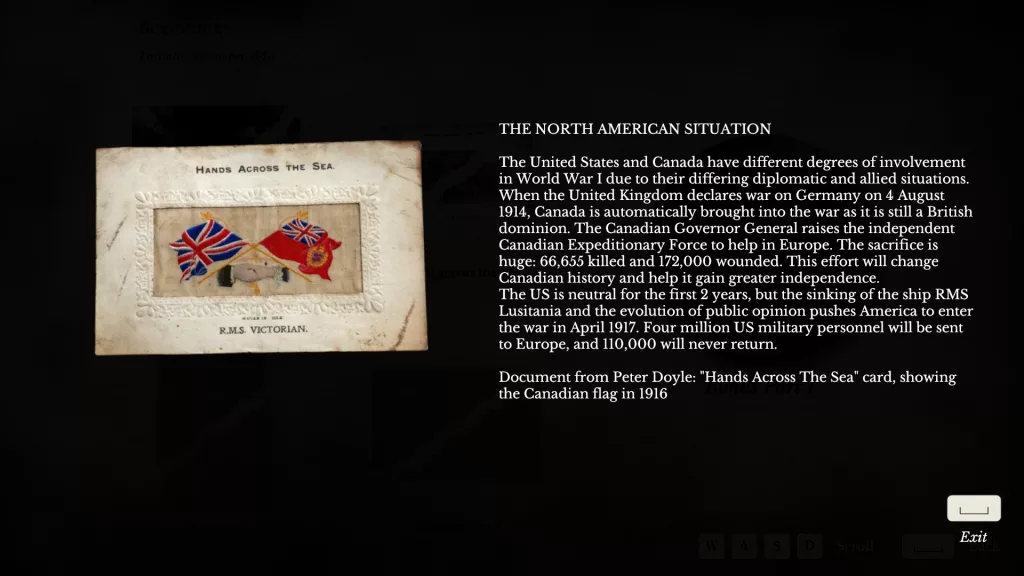
It’s a nice way of increasing immersion into the story, allowing players to learn more about the world these characters are living in.
While exploring Barret and Mr Taylor continue their conversation. Eventually Mr Taylor asks that I bring them a bottle of wine.
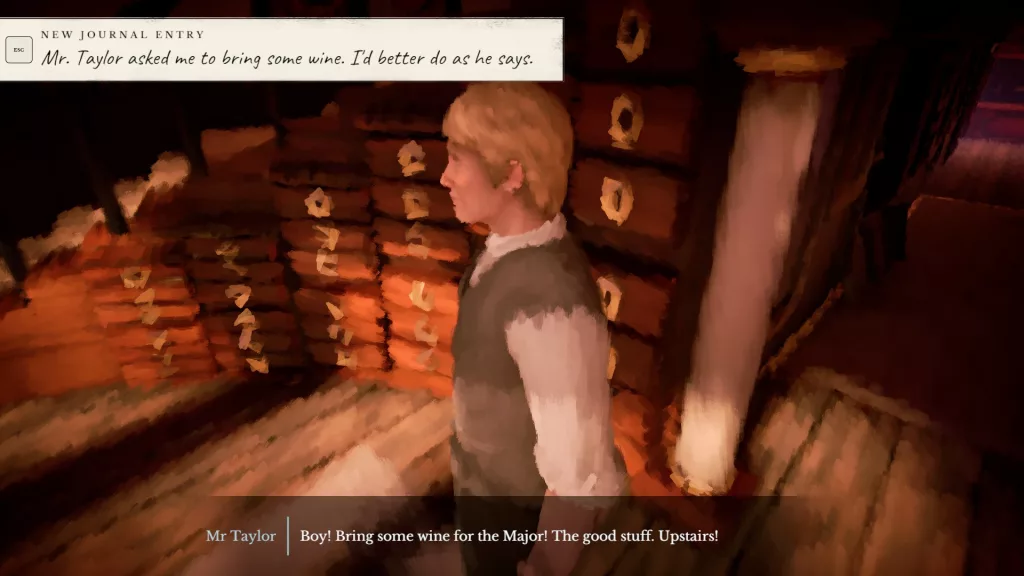
Before heading upstairs, we explore a bit more. We find another room where we hear Harry’s voiceover explaining how he was taken in by Mr Taylor.
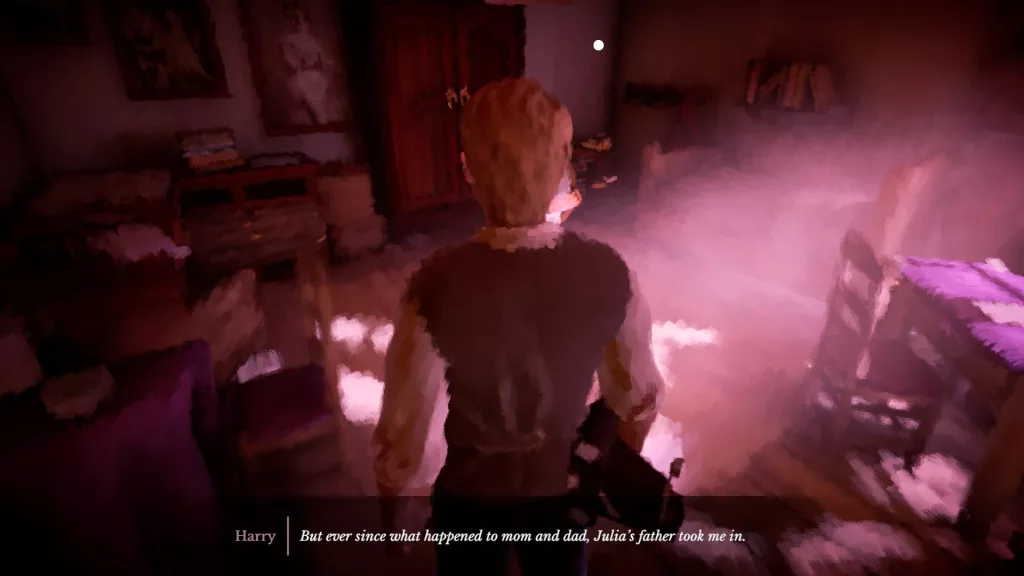
We find the wine upstairs and bring it back to the Major and Mr Taylor. My Taylor scolds us for taking too long.
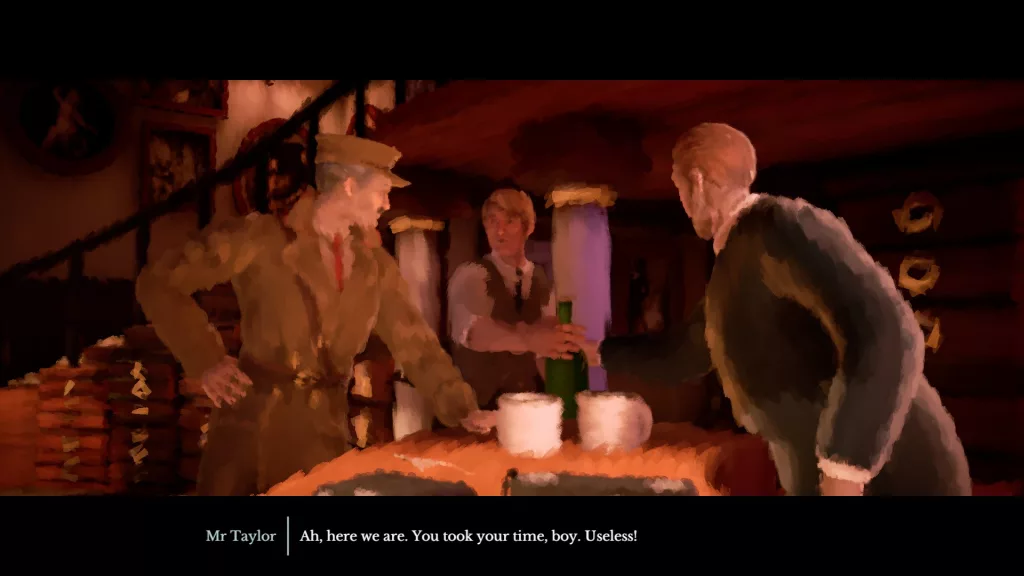
I’m not sure if we could get a better outcome from this if we didn’t take our time exploring before delivering the wine.
The conversation continues as the screen fades away and…
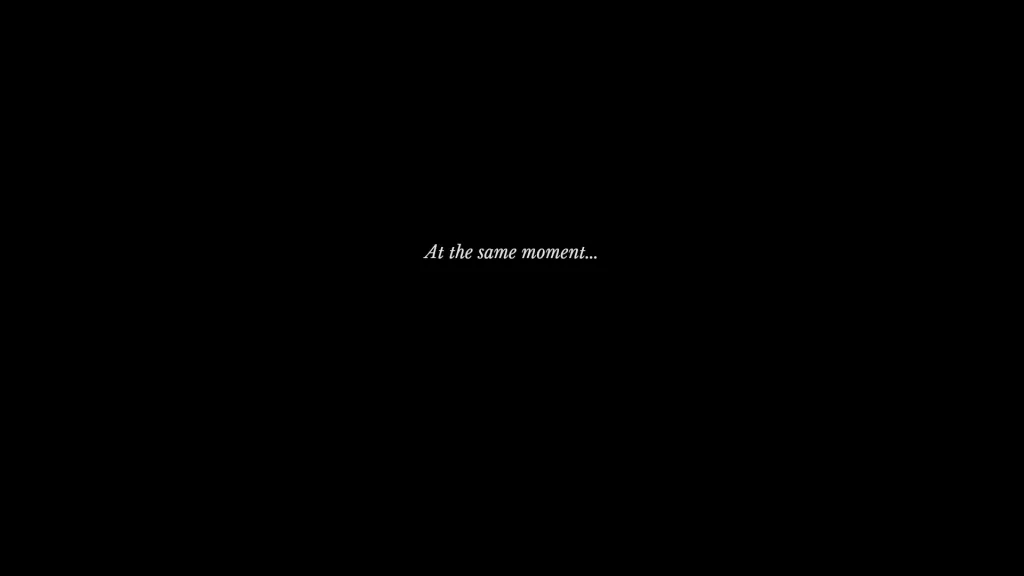
This transition takes us to Kurt, the second character we will control. He is trying to fix a radio to hear news of the war. This is presented to us as a minigame where we can fiddle with the controls.
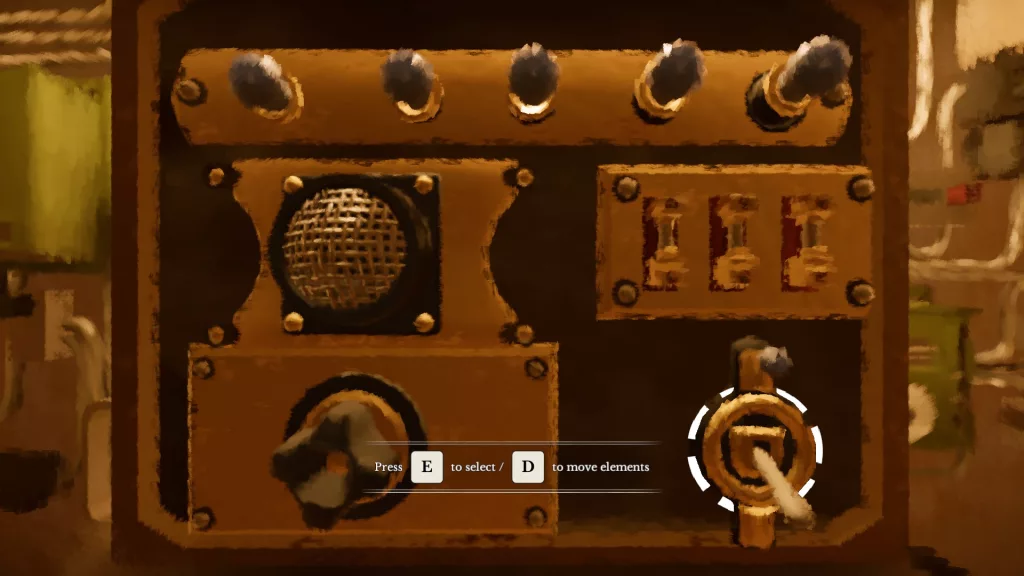
Once fixed, we hear on the radio that IR125 are MIA, presumed dead. This, as it turns out, is the unit Kurt’s son had joined.
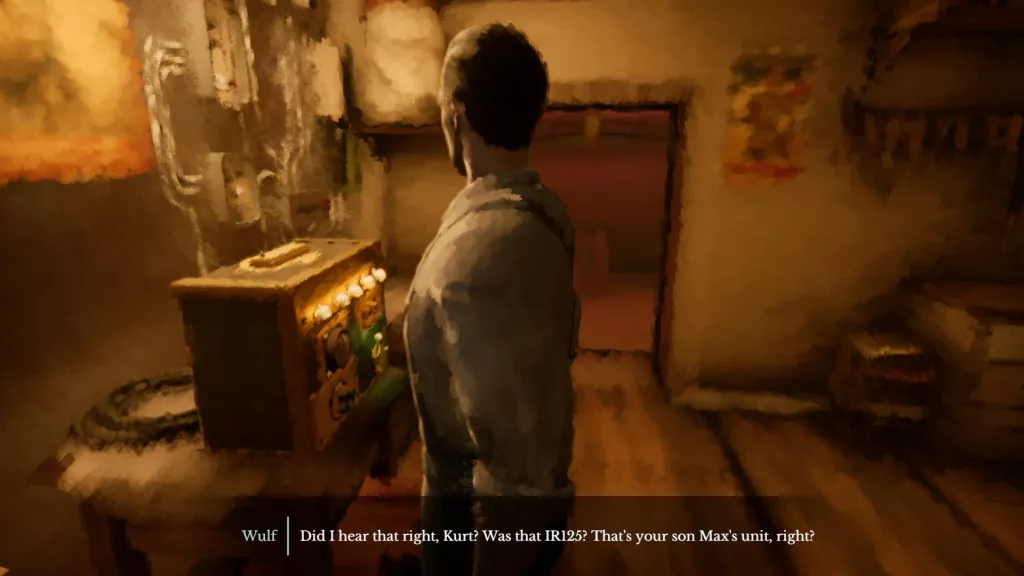
The voice actors in this section are speaking German. The English subtitles are purely for the player’s benefit. I like the way this is done – we can become more immersed in the world hearing the language these characters would actually speak.
We have to get to work so we leave this area. As we walk down we hear Kurt narrate his thoughts. His thoughts are presented in English. This is a nice touch – it gives us connection to this one character that communicates with us in our own language.
An interesting difference with the narration here is that it is presented as a letter he is writing to his wife. This is different to Harry, who’s narration feels more like an entry into a diary. It’s a nice touch, the different styles in narration highlight differences in the characters.
When we get to the main warehouse we are called over to pull a lever. But, as before. we have some freedom to explore . There are several characters we can walk up to and have a brief conversation with.
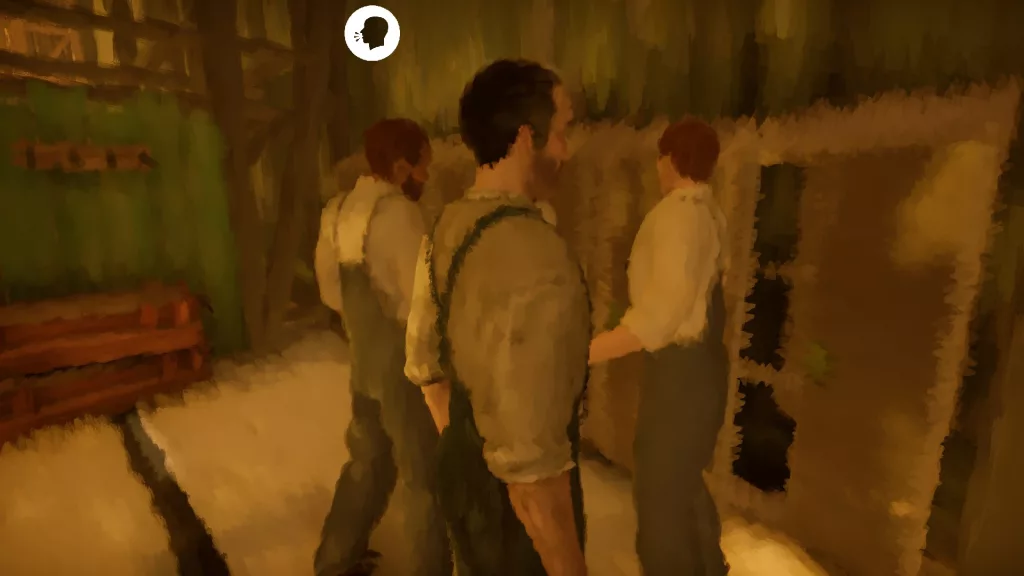
In exploring we discover a few more ways we can interact with the environment. Ladders can be used and climbed.
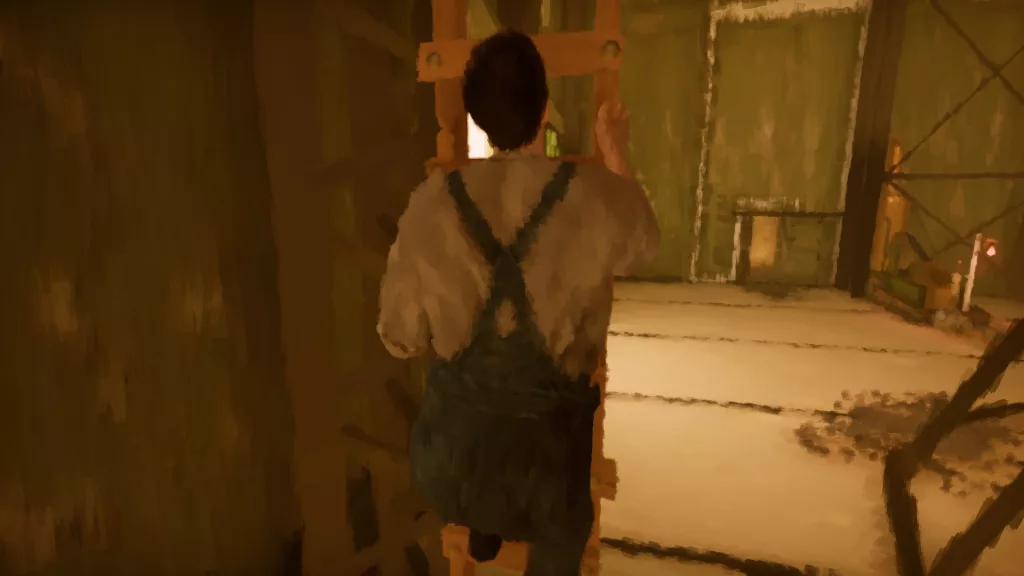
There are also carts that can be pushed and pulled.
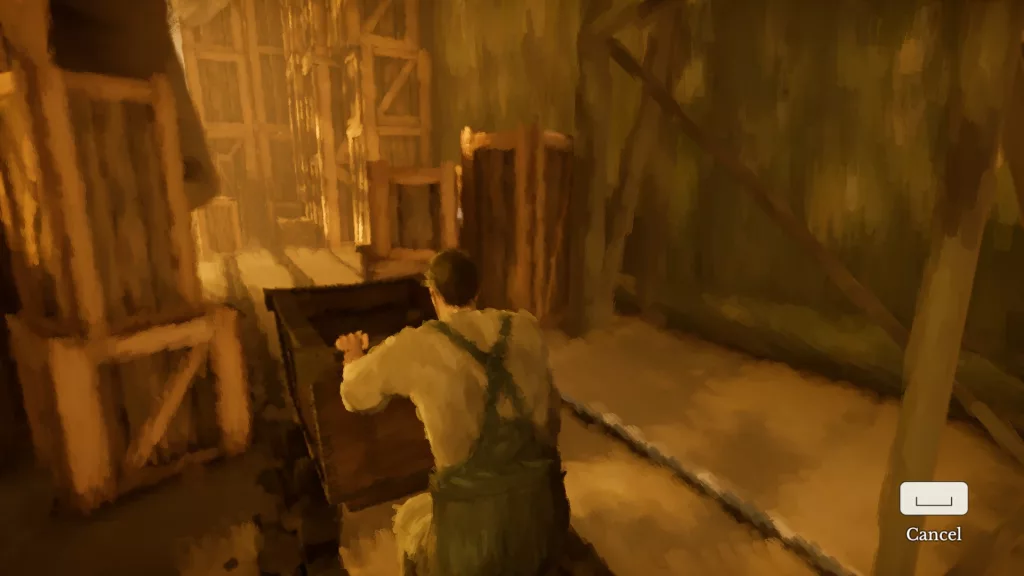
Despite controlling the same as Harry, these elements make Kurt feel more agile and dynamic than Harry. He isn’t focused on his camera, he’s climbing, pulling heavy things, doing the work of a manual labourer.
I discover a few more collectibles before I decide to go and pull the lever. I’m instructed to pull two such levers. After doing so, the camera pans up as part of the frame for a blimp is anchored into position.
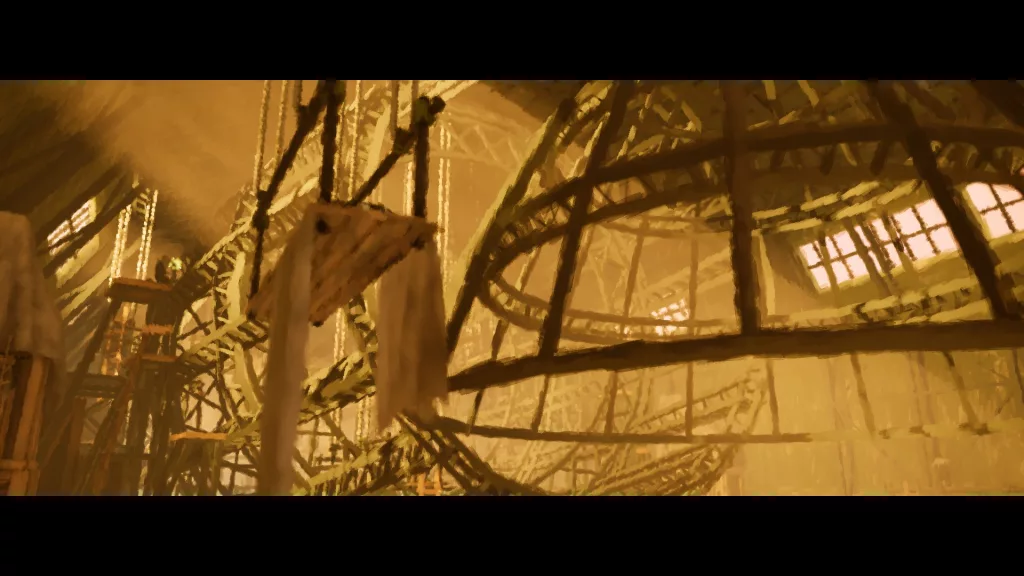
I am then told that a man named Falk is looking for me on the higher platforms. I climb the ladder and enter an acrophobic maze of planks and frames. At one point I learn the character can crouch.
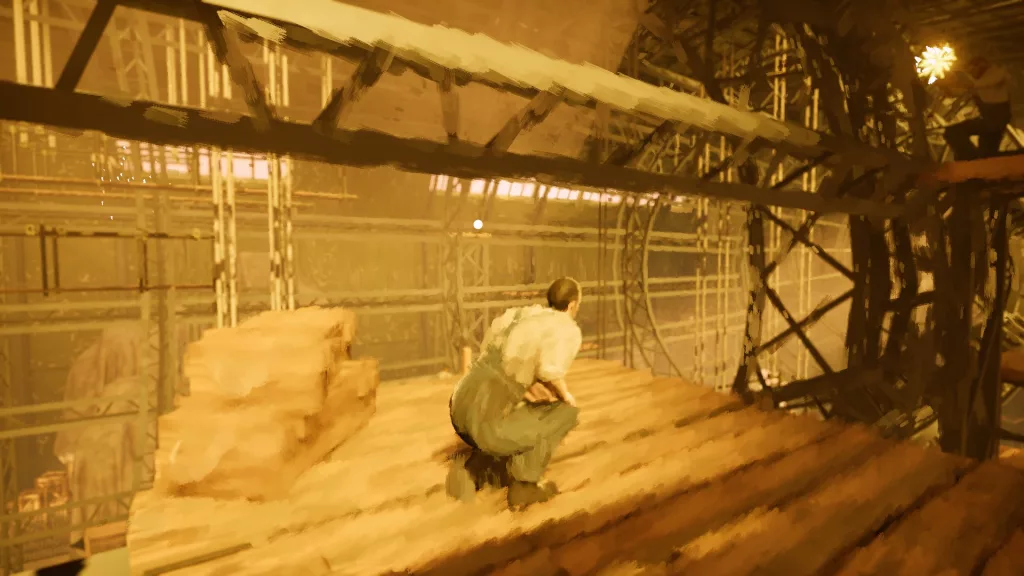
I stop to take a look at the blimp’s frame. The scale of this thing is impressive.
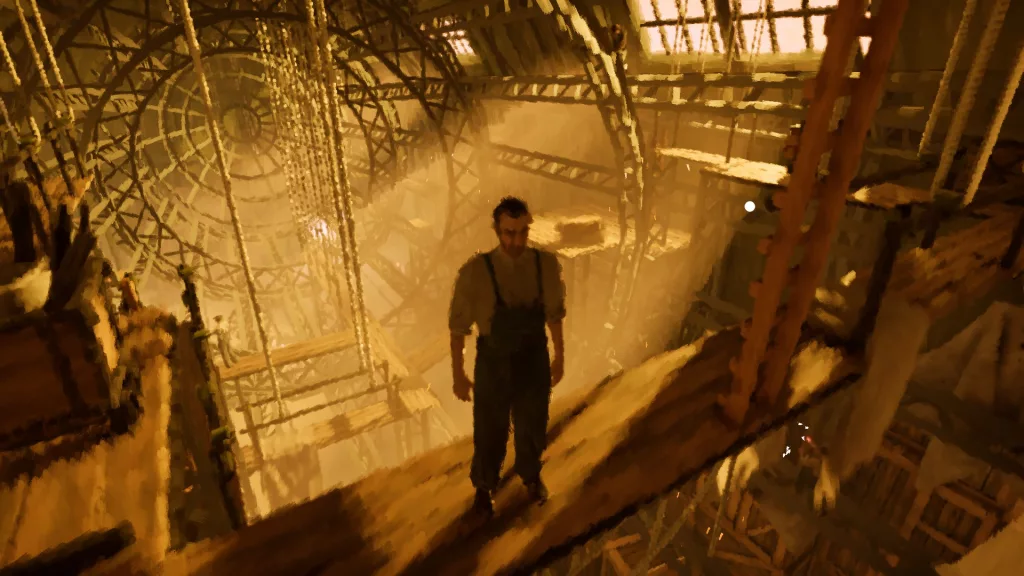
I make the last tightrope walk across a plank to reach Falk.
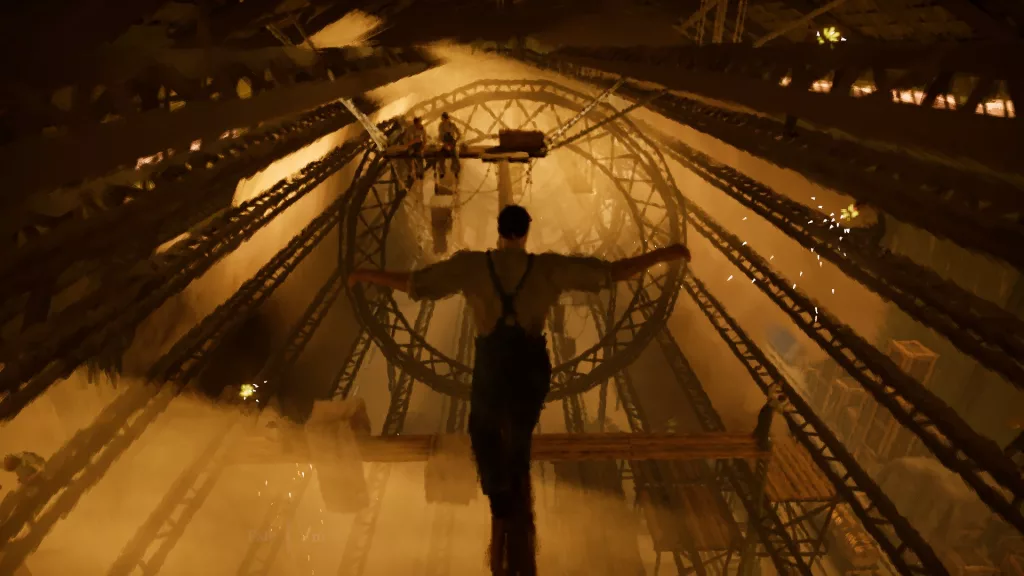
We have a brief discussion about the missing unit. Apparently, some of the others had sons fighting there as well. Then we fade out and return to Harry.
He is going through the photos of Julia that have now been developed. We are told to choose one of them to keep.
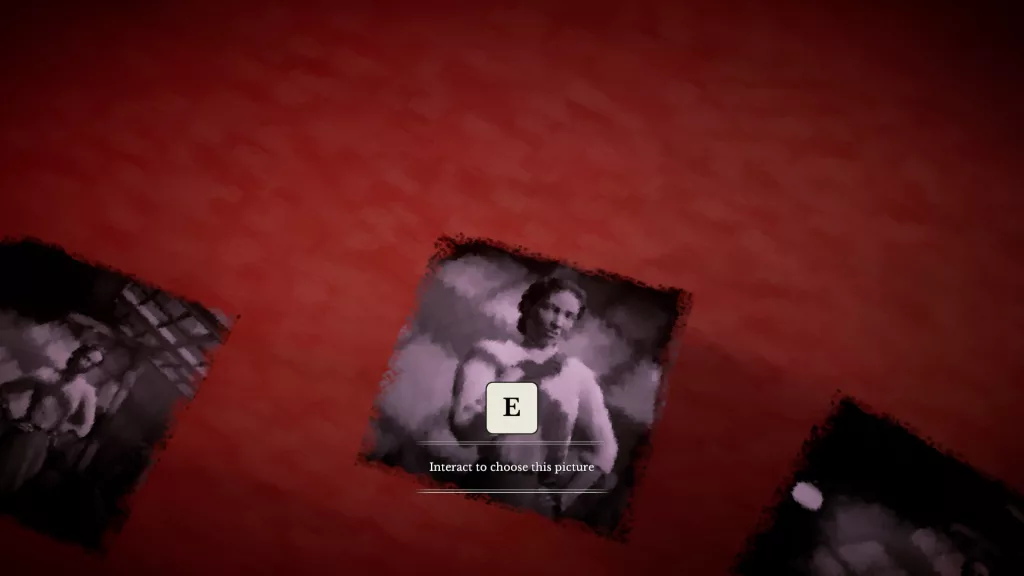
After choosing, we are summoned to take a picture of the Major. At this point we are given a little more information on how the camera mechanic works.
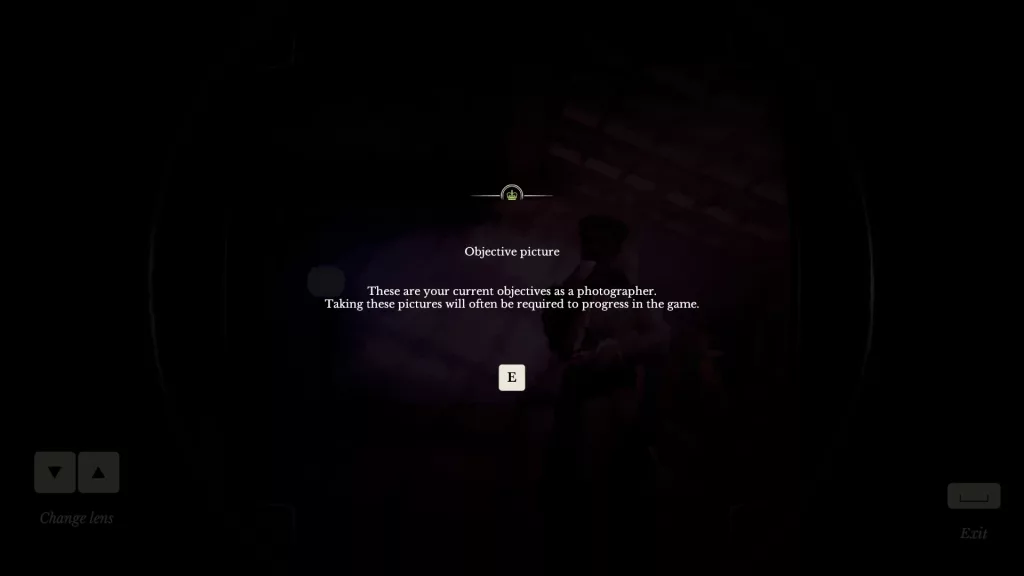
We are also told that the subjects of our pictures can affect the story. I decide to take another picture of Julia, rather than the Major. I wonder if that will affect anything. The Major then asks if Julia would take a picture with him. As we do Harry’s narration tells us how he notices that she likes a man in uniform.
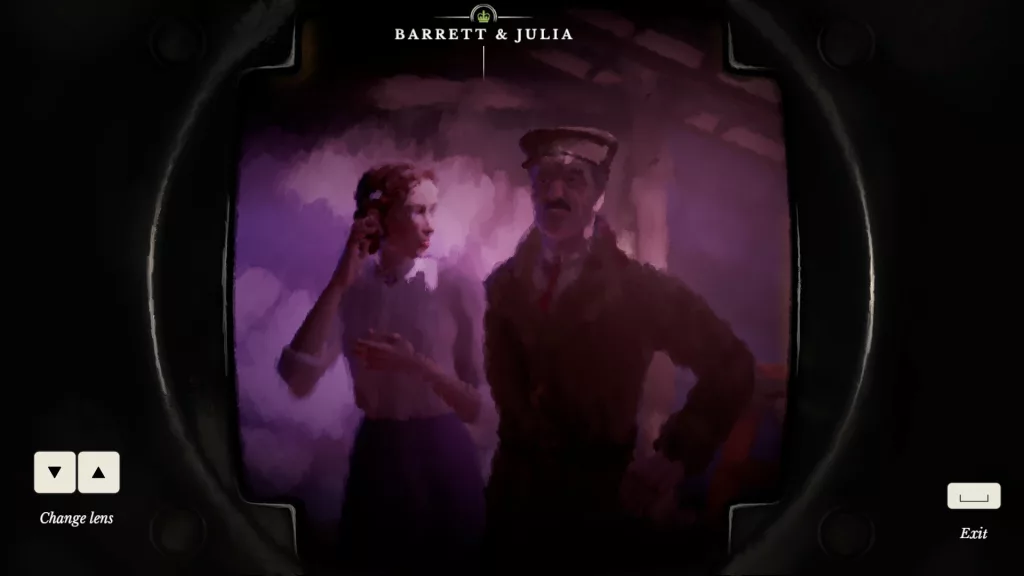
We fade back into Kurt’s story. His colleagues are asking him to see if there is any news about the missing soldiers. We find Kurt’s boss and talk about a recruiter who is there that day. We go outside and are presented with only one option.
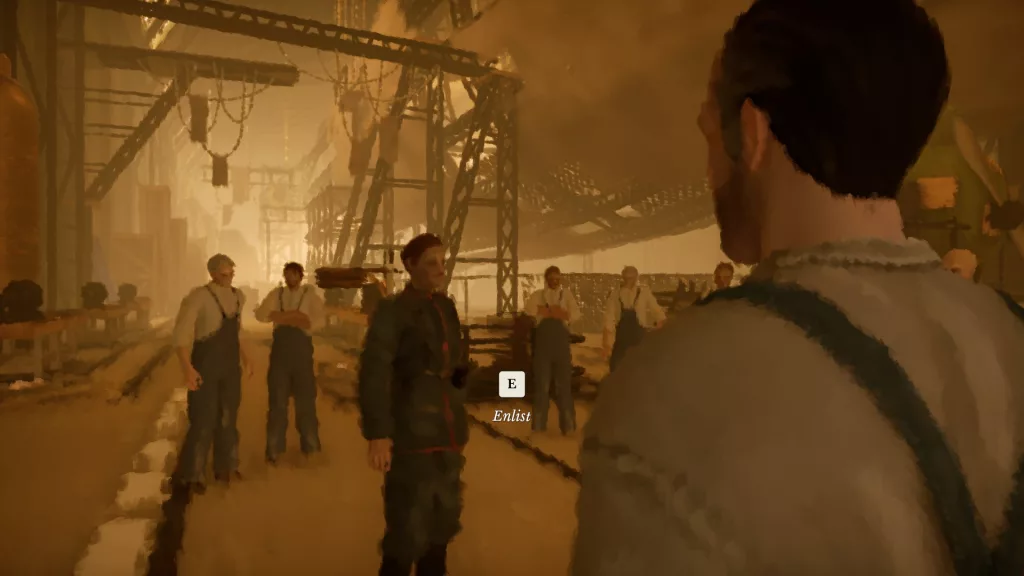
I press the button, and Kurt joins the army.
Returning to Harry’s story, the Major is asking him to join the army as a photographer. “Women love a man in uniform”, he tells him. And then…
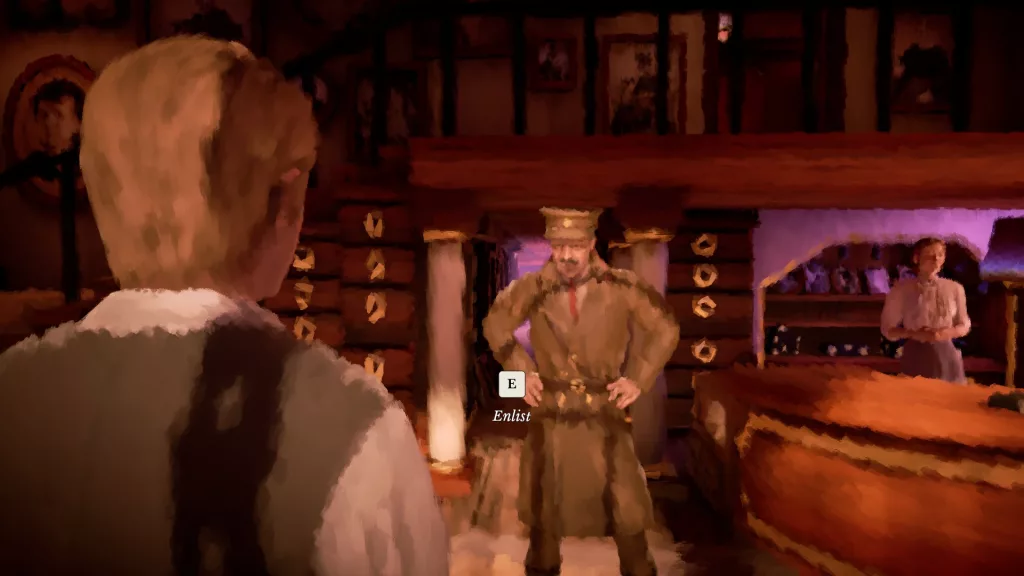
So far I like what this game has to offer. The parallels between the two characters are clear: both live far from the front lines and are relatively safe. You’d be forgiven for not knowing there was a war on. And both decide to join.
But there are obvious differences. One is Canadian, the other a German. They are from opposing sides of the War. And they join for very different reasons: one to find his son, the other to impress a woman.
The gameplay mechanics highlight the differences in the characters. Harry’s section focuses a lot on the camera. He is a photographer, so the game has us take several pictures in a small shop. Kurt, however, has to do a lot more exploration, climbing, balancing, and manual work. He is a factory worker building vehicles of war.
The collectibles add an extra element to the game that can be fun. They aren’t a necessary part of the game, but it’s nice to have sidequests.
Starting with a flash forward is what makes this game. The stories start out a little quiet, but knowing that this is all headed somewhere, to a snowstorm and a balloon, is what is keeping me hooked. The story may not be exciting right now, but I know it will be if I keep going.


